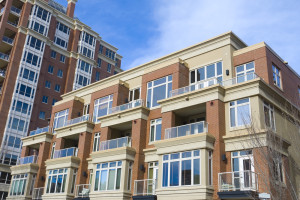Buying A Condo Part 3- New Vs Old

 There’s something inherently appealing about buying something brand new, but newer isn’t always better, especially in construction. A dishearteningly large portion of our work involves problems in new buildings, ranging from shoddy workmanship to new technologies that don’t live up to expectations.
There’s something inherently appealing about buying something brand new, but newer isn’t always better, especially in construction. A dishearteningly large portion of our work involves problems in new buildings, ranging from shoddy workmanship to new technologies that don’t live up to expectations.
One advantage to buying a unit in an older building is history. Inherent or latent defects can take time to manifest and new structures are not time-tested. There are steps that can be taken to help determine the condition of a new building, the first of which is a professional transition or warranty study.
Most states (and The District of Columbia) have in effect statutes regulating the formation and governance of community associations (condominium acts) and they typically include provisions for the correction of construction defects by the developer. That amounts to a statutory warranty, which has nothing to do with other warranties that might be offered to buyers by the developer.
Each state sets the criteria as to what constitutes a warrantable defect but they generally include any condition that reduces stability or safety below acceptable levels, restricts the intended use of a building element and/or does not comply with standards acceptable within the involved industry. Warranty periods vary by jurisdiction, usually ranging between two to three years. The acts also define periods during which lawsuits could be filed (statutes of limitations) and some limit the time an association has to notify the developer of any defects, often within the warranty period.
Before a warranty claim can be made, defects have to be identified and to the extent possible, quantified. That’s the primary purpose of a transition/warranty study. A secondary purpose can be determination of replacement reserve requirements.
Depending upon the age of the property, such a study could have been performed; however, it may not be made available to potential buyers. If the Association is embroiled in a legal action with the developer, reports might not (for strategic reasons) be made public during certain aspects of the process.
If you wish to buy into a new community and no such study has been undertaken, it would be in your best interest to propose, promote, or support one. In many cases, the burden of correcting constructions defects falls on the association if they weren’t identified within the time frames imposed by statute. Consumer protection laws in some states provide protection apart from and in addition to condominium acts, but even then, early is better.
The intent of this series is not to dissuade you from buying a condominium. All systems age and must undergo periodic repair, rehabilitation, or replacement. As long as the association has properly planned for those, the related issues amount more to inconvenience than hardship. If plans are lacking, you could be faced with having to pay for things that weren’t your fault, in the form of a special assessment or elevated assessments to pay off a loan.
